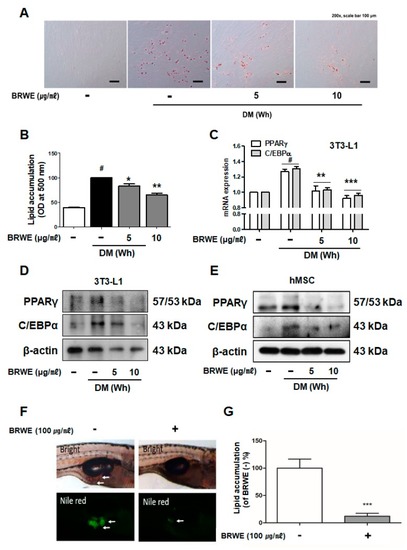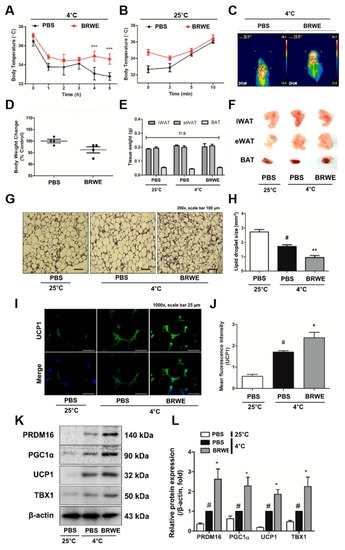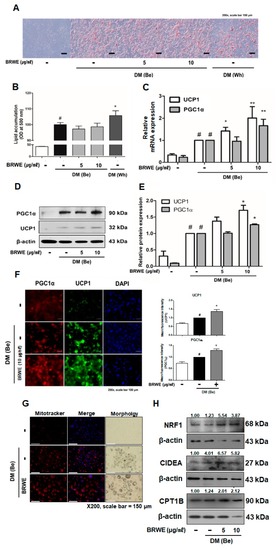- Title
-
Black Raspberry (Rubuscoreanus Miquel) Promotes Browning of Preadipocytes and Inguinal White Adipose Tissue in Cold-Induced Mice
- Authors
- Park, W.Y., Choe, S.K., Park, J., Um, J.Y.
- Source
- Full text @ Nutrients
|
Black raspberry water extract (BRWE) suppresses adipocyte development in human adipose tissue-derived mesenchymal stem cells (hMSCs) and zebrafish. ( |
|
BRWE increases browning of inguinal white adipose tissue in cold-stressed C57BL/6J mice. C57BL/6J mice were treated with BRWE (100 mg·kg−1, oral administration) or phosphate buffered-saline (PBS) for 2 weeks and then placed at 4 °C for 5 h; ( |
|
BRWE promotes browning of adipocytes in 3T3-L1 adipocytes. Two days after achieving confluence, 3T3-L1 pre-adipocyte cells were stimulated by DM (Be) containing 0.5 mM IBMX, 167 μM insulin, T3 20 μM, and 0.5 μM troglitazone with/without various concentrations of BRWE. After 6 days, intracellular lipid droplets were measured with ( |



